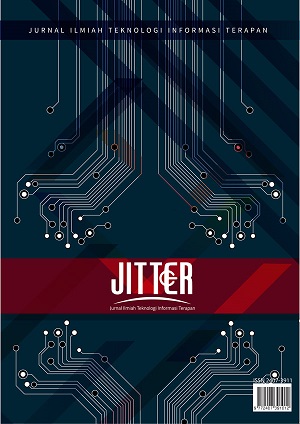DIFFERENCES IN WELL WATER QUALITY USING SIMPLE FILTRATION METHODS IN KAMOLAN VILLAGE, BLORA DISTRICT
DOI:
https://doi.org/10.33197/jitter.vol9.iss2.2023.1028Keywords:
Well water, Filtration, Water QualityAbstract
The purpose of this study was to determine the quality of well water after filtration using Monyl T54 screen cloth so that the percentage of quality standard values ??of well water through filtration with ground well water in Kamolan Village, Blora Regency, could be compared.
Determination of sampling points in the field using purposive sampling method, with determination of sampling points based on differences in characteristics found in the study area where ground well water is still used for daily needs. Some of the parameters measured are hardness, temperature, pH, turbidity, color, iron and manganese which are then compared with the criteria for the Quality Standards for clean water or drinking water according to the attachment to the Decree of the Head of UPTD Health Laboratory District. Blora No. 445.9/022/1/2019. This is because there is no communal wastewater treatment installation system so that the position of the septic tank and wells greatly influences water quality.
It is hoped that the results of the research will be able to provide shared awareness of the importance of water treatment plants in densely populated areas using well water sources. If there is no communal or local wastewater treatment plant, it is recommended to use PDAM water.
Downloads
Downloads
Published
How to Cite
Issue
Section
License
Copyright (c) 2023 Devi Megarusti Pratiwi

This work is licensed under a Creative Commons Attribution-NonCommercial-ShareAlike 4.0 International License.
Submission of a manuscript implies that the submitted work has not been published before (except as part of a thesis or report, or abstract); that it is not under consideration for publication elsewhere; that its publication has been approved by all co-authors. If and when the manuscript is accepted for publication, the author(s) still hold the copyright and retain publishing rights without restrictions. Authors or others are allowed to multiply the article as long as not for commercial purposes. For the new invention, authors are suggested to manage its patent before published. The license type is CC-BY-SA 4.0.




.png)
.png)













.png)


